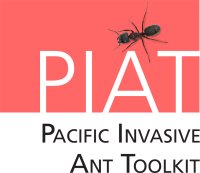Bait stations
Where broadcast bait is not appropriate, such as areas where livestock or other domestic animals may consume bait spread on the ground, bait stations may be used.
NOTE: Not all ants will find bait stations attractive. It is advised that a test is done before purchasing large quantities of stations.
It is NOT recommended for bait stations to be used as a substitute for general broadcast baiting. This is because they are costly, need to be positioned close to one another in order to achieve the best bait distribution, and take a lot of time to fill and check. They are best used in targeted locations.
Most bait stations can be used with granular, liquid or paste / gel baits. See treatment options to find out if bait stations are appropriate for your needs. A number of off-the-shelf products for treatment around the home include bait stations.
SAFETY FIRST! ALWAYS READ THE SAFETY DATASHEET (SDS). WEAR GLOVES WHEN HANDLING BAITS. WASH YOUR HANDS THOROUGHLY AFTERWARDS. DO NOT EAT, DRINK OR SMOKE WHEN HANDLING PRODUCTS
Commercial in-ground bait stations : Detto sticky traps : Elevated bait stations
Commercial in-ground bait stations
Commercial ground bait stations typically consist of a ground spike, which is driven into the ground, a reservoir which is filled with bait and a lid.
Spacing stations 5-10 m apart is recommended. The bait stations can be left permanently and refilled as necessary.
Bait stations should be placed where ants are likely to forage, preferably sheltered from the sun and rain. Although the lids protect the bait from light showers, heavy rain will get in to the stations.
Always wear gloves when handling pesticides.

Bait placed in a sheltered, shaded area (© Allan Burne, Pacific Biosecurity) |

Typical ground bait station showing the three component parts: lid, base for holding bait, and a spike for inserting into the ground (© Monica Gruber, Pacific Biosecurity)
The spike inserted into the ground (left). The bait is placed in the base and the lid attached. The lid and base clip into the spike (© Monica Gruber, Pacific Biosecurity) |
Detto sticky traps
|
Detto sticky traps (see images below) have been used by the Wet Tropics Management Authority to passively monitor yellow crazy ant presence. However, they can also be used for bait distribution. These traps are made of two pieces of folded galvanized steel, that together make a hollow box with space to put paste or granular bait. The ants enter through small holes. The small diameter of the holes (5 mm) prevents non-target invertebrates and other animals from entering the bait station.
The Detto sticky trap. On the right is the assembled trap. The two component pieces are on the left, including the sticky board and sponge (© Wet Tropics Management Authority) |
Installing Detto sticky traps for monitoring yellow crazy ants (© Wet Tropics Management Authority) |
For information on creating your own Detto sticky traps, please contact the Wet Tropics Management Authority.
Elevated bait stations

Elevated bait station filled with granular bait and attached to a coconut palm (© Brett Rawnsley, Flybusters Antiants Consulting) |
Elevated stations are mounted on trees, fence posts or other structures above the ground.
The stations shown here are only suitable for granular or paste bait when there is no likelihood of rain. These bait stations are wooden cones that are usually used for serving food. They are an inexpensive alternative to purpose built bait stations and can easily be refilled, and are biodegradable. The stations are stapled or pinned in place. It is recommended that where small children or animals are present, the bait stations are placed at least 1.5 m above the ground to prevent tampering. Spacing stations approximately 10 m apart is recommended, but this depends on the treatment product. These bait stations are easily accessible, and highly attractive, to rats. |
Information sources
Burne, Barbieri, Gruber. 2015-2019. Management Plan Atafu, Tokelau. Pacific Biosecurity Management Plan
Flybusters Antiants Consulting 2015. Yellow Crazy ant treatment Atafu, Tokelau. Report for Pacific Biosecurity
Chris Clerc, Wet Tropics Management Authority and Lori Lach, James Cook University
content reviewed by Viv van Dyk, FBA Consulting, July 2017




